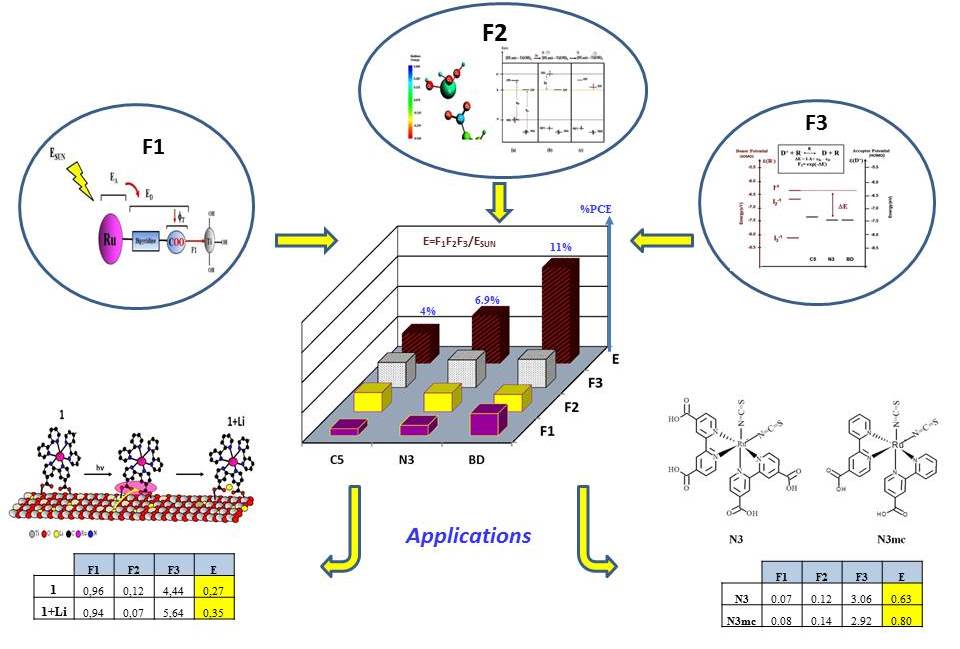The BCL Method for Dye-Sensitized Solar Cell: Basis and Applications
The BCL method is a theoretical framework to understand and predict dyes and their efficiency in solar cells. The method is comprehensively presented in a recent paper. It is based on a system of equations using TDDFT to obtain the Global Efficiency Index (GEI), for the efficiency of a dye-sensitized solar cell. The GEI is obtained through the product of three factors: the available energy for injection(F1), the amount of charge injected(F2), and the efficiency of regeneration(F3). The results so far obtained show a promising correlation with the experimental photo conversion efficiency (PCE). Moreover, the method provides theoretical tools that allow understanding of the operation of the cell, and keys to optimize it.
Highlights
- Good reproduction of Experimental results
- All calculations performed woith the ADF package
- Using OPBE exchange-correlation functional and SAOP model potential
- Applications in the field of lithium solar batteries and development of improved pigments are proposed

Check out the basic manual on how to run BCL calculations. We hope to have scripting solutions to help you run such workflows more efficiently. You can also build other workflows yourself with PLAMS.
M. Barrera, I. Crivelli, B. Loed, The BCL Method for DSSC: Basis and Applications, Appl. Sci. 12, 2358 (2022)
Key conceptsADF batteries DSSCs organic electronics TDDFT